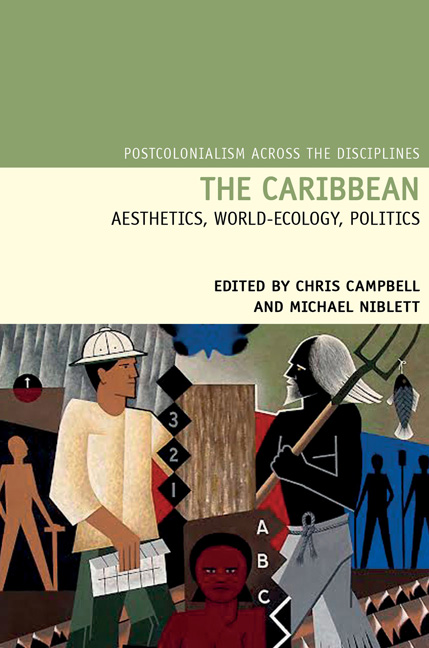Book contents
- Frontmatter
- Contents
- Acknowledgements
- Introduction: Critical Environments: World-Ecology, World Literature, and the Caribbean
- Prologue: The Brutalization of Truth
- Catastrophes and Commodity Frontiers
- 1 The Political Ecology of Storms in Caribbean Literature
- 2 Zombies, Gender, and World-Ecology: Gothic Narrative in the Work of Ana Lydia Vega and Mayra Montero
- 3 Gade nan mizè-a m tonbe: Vodou, the 2010 Earthquake, and Haiti's Environmental Catastrophe
- Ecological Revolutions and the Nature of Knowledge
- Economies of Extraction: Restructuring and Resistance
- Epilogue: Tingaling
- Notes on Contributors
- Index
2 - Zombies, Gender, and World-Ecology: Gothic Narrative in the Work of Ana Lydia Vega and Mayra Montero
from Catastrophes and Commodity Frontiers
- Frontmatter
- Contents
- Acknowledgements
- Introduction: Critical Environments: World-Ecology, World Literature, and the Caribbean
- Prologue: The Brutalization of Truth
- Catastrophes and Commodity Frontiers
- 1 The Political Ecology of Storms in Caribbean Literature
- 2 Zombies, Gender, and World-Ecology: Gothic Narrative in the Work of Ana Lydia Vega and Mayra Montero
- 3 Gade nan mizè-a m tonbe: Vodou, the 2010 Earthquake, and Haiti's Environmental Catastrophe
- Ecological Revolutions and the Nature of Knowledge
- Economies of Extraction: Restructuring and Resistance
- Epilogue: Tingaling
- Notes on Contributors
- Index
Summary
The individual, the community, the land, are inextricable in the process of creating history. Landscape is a character in this process. Its deepest meanings need to be understood – Édouard Glissant (1989, 105–06)
It is widely accepted that Gothic fears construct ‘a monster out of the traits which ideologies of race, class, gender, sexuality and capital want to disavow’ (Halberstam, 1995, 102). Indeed, much has been written on the Gothic's inherent relation to racist-patriarchal capitalism, but the role of ‘ecophobia’ within the Gothic has only more recently become a focus of sustained critical attention. Historical capitalism has developed through a series of metabolic rifts that have as their ideological complement the nature–society dichotomy (a dichotomy which is also gendered and racialized). Put simply, these ‘rifts’ refer to the increasing alienation of the majority of the population from the means of reproduction – most fundamentally, the land and the body. The zombie is ideal for starting to think through Gothic representations of these rifts (Oloff, 2012). Zombies have become globally recognizable figures because they speak powerfully to the anxieties produced by the commodification of labour: humans are reduced to being bodily vessels for the production of specifically capitalist value (socially necessary labour time). Yet commodification is also fundamentally an ecological process, something that becomes clear if we consider the zombie's Haitian origins. The zombie has its roots in a paradigmatic moment in the emergence of capitalism: the Caribbean experience of the sugar frontier's violent restructuring of nature–society relations. If we follow Jason W. Moore's injunction to understand capitalism as world-ecology (2010), the classic zombies toiling on the plantation fields can be read as a cultural response to capitalism's development through the ruthless exploitation, degradation, and commodification of nature through enslaved labour.
There exist a number of variations on the zombie figure, the most important of which for this chapter is the vacant-eyed, light-skinned, female zombie. This female zombie – the victim of patriarchal society and a clear instantiation of the monstrous-feminine – functioned as a staple within the US imperial imagination, where she encapsulated racist fears of contagion (as in the Halperins’ White Zombie [1932] or Tourneur's I Walked with a Zombie [1943]). She also appears within twentieth century Haitian literature, articulating and examining racial, class, and gendered anxieties.
- Type
- Chapter
- Information
- The CaribbeanAesthetics, World-Ecology, Politics, pp. 46 - 62Publisher: Liverpool University PressPrint publication year: 2016

